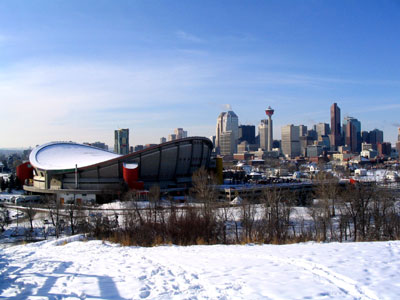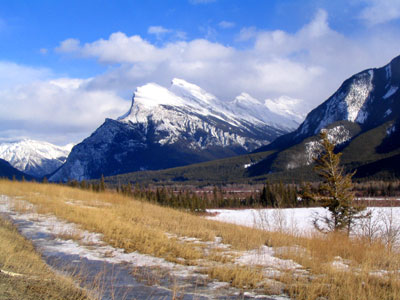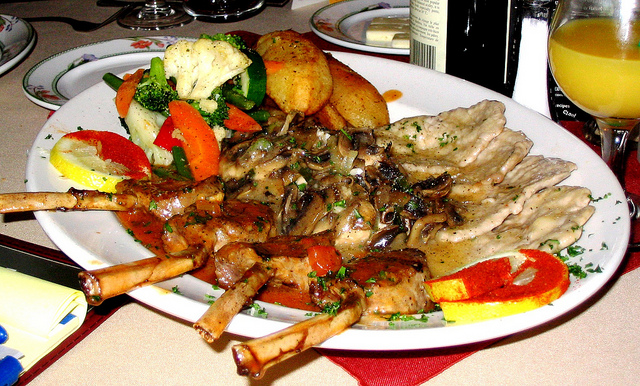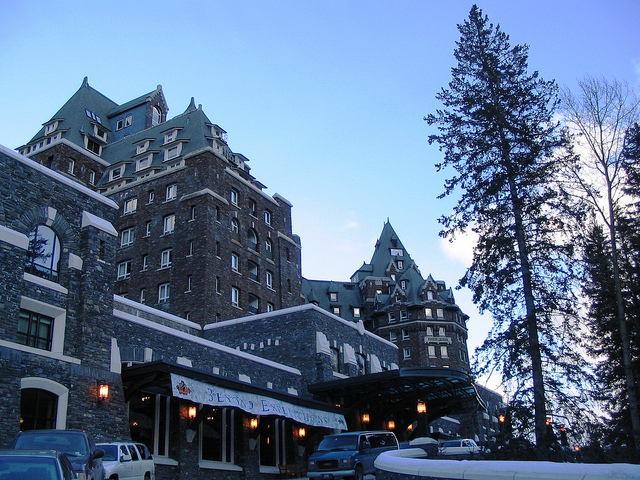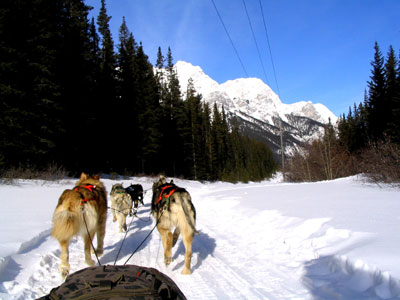As so many times before, I used my Airmiles to book our flights to Calgary (with the Westjet Airmiles Mastercard you get to fly out west for only 1600 Airmiles instead of having to use 3000 Airmiles in high season with other airlines). As an astute traveller you have to look at every option of cutting your travel costs and Airmiles is one of my favourite tools. A direct flight took us from Toronto to Calgary in about three and a half hours.
We arrived at the Calgary Airport at roughly 11:25 am and the weather was rather overcast on arrival with an outside temperature of -12 degrees Celsius. Because we only had about a day in Calgary, an official tour of the city was going to really give us the lay of the land and Jocelyne Morrison from Time Out For Touring was there to pick us up. Jocelyne herself hails actually from Quebec, but has been living in Calgary for the last 10 years. And it turns out she loves the city and is an absolute expert in it.
The first thing that struck me upon arrival were all the statues and sculptures located at the baggage carousels, all with different themes. Obviously Calgary likes to entertain its visitors while they wait for their luggage at the airport. The next sight that caught my attention was a volunteer dressed up in a bright red vest and cowboy hat who was there to welcome tourists. Jocelyne explained that Calgary actually is a city of volunteers: 7 out of 10 Calgarians volunteer their time for a good cause, and volunteers were some of the main reasons why the Calgary Olympic Games in 1988 were the first Olympic Games in history to actually make (rather than lose) money.

Volunteer at the Calgary Airport
Jocelyne packed us into the touring van and off we went on our very compact exploration of Calgary. The first thing that struck me about Calgary was its topography: it is located in a relatively flat area with a number of long, stretched out low-lying hills. On good days you can actually see the Rocky Mountains to the west, but unfortunately the weather was overcast, so we didn’t get to see the Rockies today.
Calgary is divided north-south by the Bow River, and Centre Street divides the city’s east from the west. As a result the city has 4 quadrants with streets running north-south and avenues running east-west. So in order to find an address you always have to know whether it is in the northwest, northeast, southwest or southeast quadrant in Calgary. Jocelyne explained that many of the streets in Calgary are named after native names, eg. Deerfoot Avenue (apparently named after a native person who was a really fast runner).

The Petrocanada Towers in downtown Calgary
Nose Hill is one of the most prominent hills in Calgary; it is a long-stretched out topographical feature without much vegetation. Jocelyne explained that this type of landscape is pretty much typical of Calgary as a prairie city. Much of Calgary’s natural landscape is a mix between grassland and semi-arid forests. When it gets very dry in the summer, there are a lot of grass fires.
Calgary is also a booming city. Cranes are everywhere, and new subdivisions are growing out of the ground like mushrooms. Essentially only the downtown area has highrise buildings, while the residential areas outside of the core mostly consist of single-family homes rather than highrise apartments. Calgary, as the “Energy Capital of Canada” and the centre of Canada’s oil industry, is experiencing rapid economic growth and people from all over Canada are migrating here. The population today is roughly 1 million.
Next we drove by McMahon Stadium, where Calgary’s Stampeders football team is headquartered. This stadium was also used for the opening and closing ceremonies during the 1988 Olympic Games, another reason why Calgary made money on these games: by reusing and refunctioning existing facilities. Prudent financial management at work……

McMahon Stadium
The next big item on the itinerary was “C.O.P.”: Canada Olympic Park, a place so interesting it deserves its own story. After our guided tour through the Olympic facilities we drove on the Sarcee Trail to get into downtown Calgary. Coming into town from the west side we had a very nice view of the cluster of skyscrapers downtown. While driving in through the residential areas, Jocelyne explained that a large number of residential condominium developments are going up downtown. One example of the population explosion was the move of Canadian Pacific’s headquarters from Montreal to Calgary in 1996 when 700 families moved into town at the same time.
Calgary pays a lot of attention to the quality of life of its residents. The city has hundreds of kilometers of walkways and trails, particularly beside the Elbow and Bow Rivers. Doglovers in particular have it good here since the city provides many off-leash areas to its dog-owners. 55 golf courses are located in the immediate vicinity of Calgary and golf is a very popular pastime here.

View from the Calgary Tower
